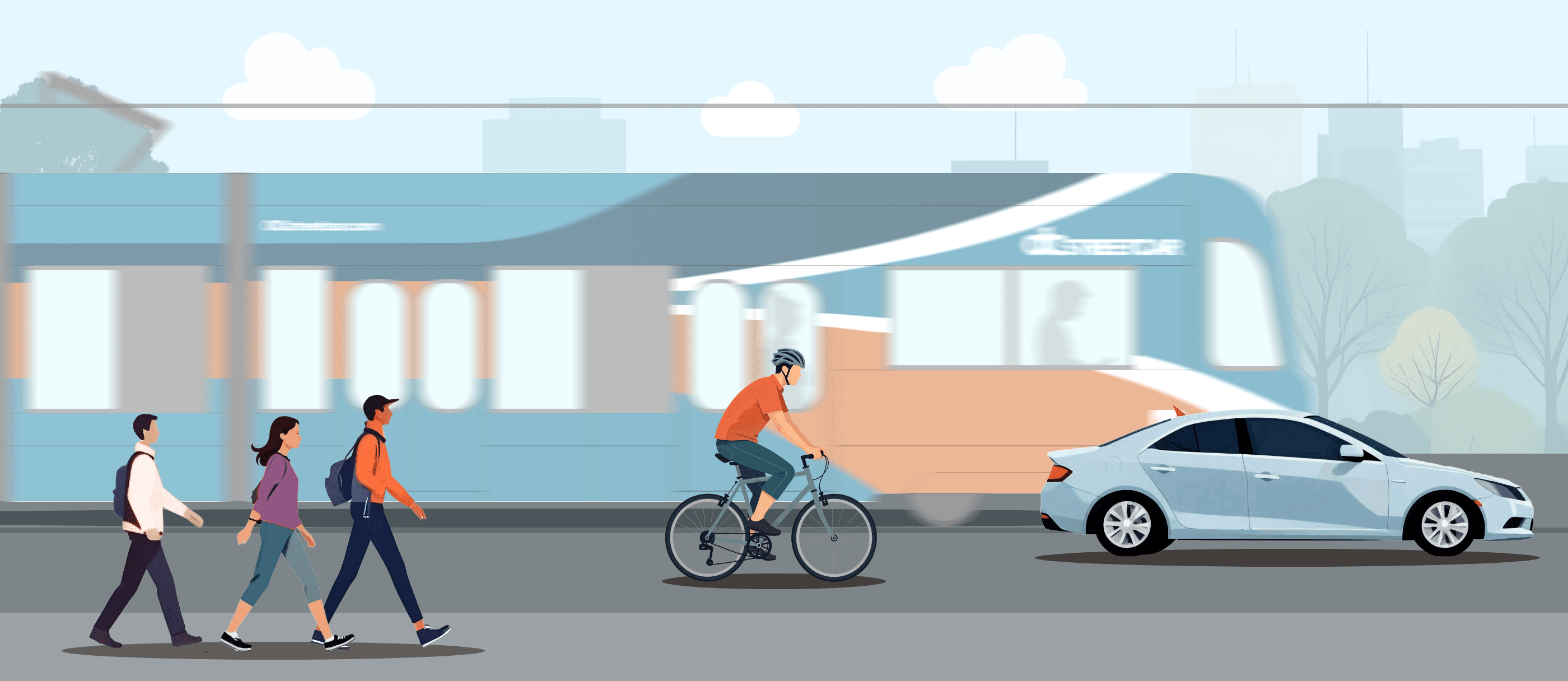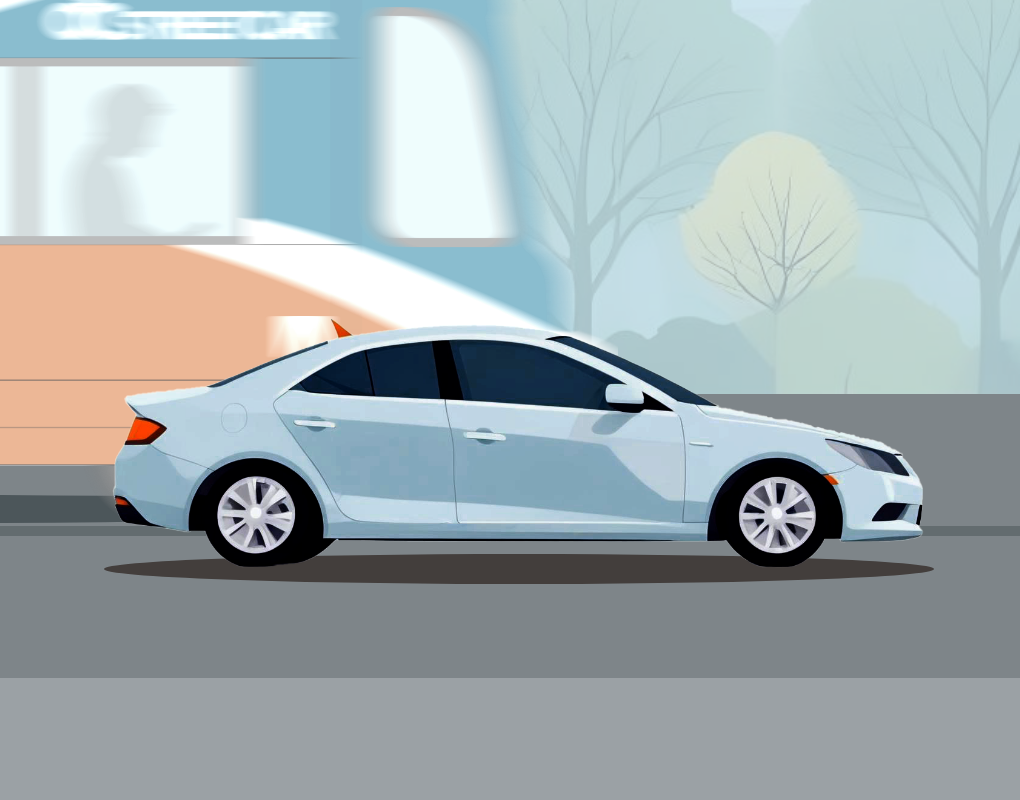Getting Streetcar Ready
Orange County’s first modern streetcar will arrive in Spring 2026 to serve you. Connecting with the rail and bus network, OC Streetcar will offer car-free transportation between Santa Ana, Garden Grove and beyond. To prepare for OC Streetcar system and vehicle testing, followed by revenue service, it’s time to get streetcar ready.

Basic Safety Tips
Watch the Safety Video
Frequently Asked Questions
The OC Streetcar is a short train-like vehicle with metal wheels powered by electricity that operates alongside cars via rails embedded in the street, connecting 4.15 miles from the Santa Ana Regional Transportation to the Westminster Avenue and Harbor Boulevard intersection in Garden Grove. Streetcars differ from other light rail system vehicles, which are longer, travel faster and typically operate within a lane separate from streets, providing transportation within and between cities.
Streetcars powered by electricity operate in the roadway alongside cars, buses, motorcycles and other vehicles by moving with the flow of traffic, following traffic signals and signage. However, streetcars operate on a fixed route, making them unable to maneuver around potential hazard like other vehicles. Streetcars relieve roadway congestion and improve air quality by providing transit connections and reducing automobile dependency. By following a transit signal priority (TSP) system, service can be improved and delays at intersections can be reduced.
An extensive testing phase will take place before the start of the streetcar service. The testing phase will take place in two parts. The first testing phase will include System Testing beginning a year ahead of scheduled service, to test fixed facilities, systems and equipment to ensure the system performs as intended. The second testing phase will include Vehicle Testing, beginning nine months before scheduled service, to simulate passenger service along the corridor without passengers. During Vehicle Testing, empty streetcar vehicles will operate along the corridor during scheduled service hours.
Extensive testing of the system is necessary to ensure full readiness for operation. Key milestones during the testing phase include System Testing to begin in 2024 and Vehicle Testing to begin nine months ahead of scheduled service. The System Testing phase tests fixed facilities, systems and equipment to ensure the system performs as intended. The Vehicle Testing phase simulates passenger service along the corridor without passengers. During Vehicle Testing, streetcar vehicles are operating during scheduled service hours.
Once system testing has been successfully completed, the OC Streetcar will begin operating. The streetcar is anticipated to begin operation in 2025.
The speed of the OC Streetcar varies depending on the speed of traffic. To ensure safety, the street-running locations travel slower than the portion of the route traveling on the Pacific Electric right-of-way between Raitt Street and Harbor/Westminster. Additionally, conductors adjust speeds depending on traffic and other situational experiences.
Streetcars are very quiet and you may not hear their approach. Pedestrians, cyclists and motorists are encouraged to stay alert and aware of their surroundings and unplug from any electronic device before crossing the tracks.
Streetcars are powered by an overhead electrical power supply called a catenary system. While the tracks on the ground are not electrified, the overhead wires are. Overhead wires of the OC Streetcar are about 20 feet above street level. By staying 10 feet away from the electrified overhead wires, safety is ensured for all forms of travel.
Safety and Informational Materials
Contact the OC Streetcar Outreach Team
If you have questions, please contact the Outreach Team by calling 844-746-6272 or email OCstreetcar@octa.net
Español: Si prefiere recibir información en español, por favor llame este numero: 909-714-0172
Tiếng Việt: Nếu quý vị muốn nhận được thông tin này bằng tiếng Việt, xin vui lòng liên lạc với anh Ted Nguyen: 714-560-5334




